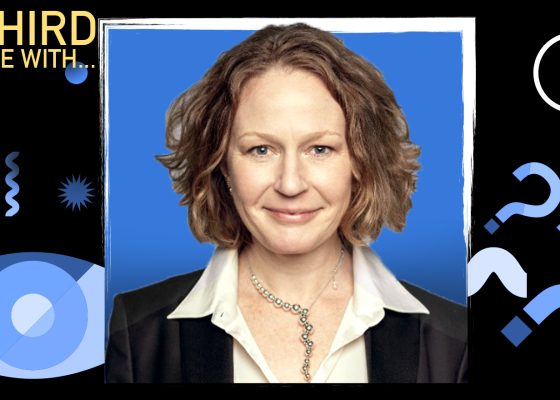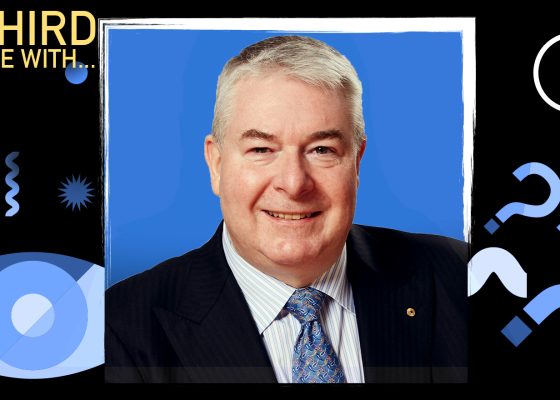CEO of Inala Primary Care Tracey Johnson explains how she’s turning smart ideas into lasting healthcare reform.
With three big awards in under 12 months, CEO of Inala Primary Care Tracey Johnson insists she’s just an ordinary person who solves problems. But when she accepted a national award from the Prime Minister last year, she admits she had to pinch herself.
In this Third Degree interview, she reflects on leading a practice that serves some of Queensland’s most marginalised patients, co-founding the Cubiko data platform, and why every step comes back to the same question: how can Australia deliver better healthcare?
With new funding and a national spotlight, she’s determined to turn smart ideas into lasting reform.
Congratulations on all your recent awards! What have you received?
The first one was the Stronger Medicare award that we won in November last year. I never imagined I’d even meet the Prime Minister, much less be given an award by him!

That was awarded to Inala Primary Care. It recognised us as a highly innovative group which delivers very patient-centred care.
We don’t just deliver care the way it’s always been done. We’re always asking, who are the patients, what do they need and how do we meet those needs better? This drives our innovation in our highly diverse social housing community, where health literacy is low and chronic disease is high.
Then in July came the Australian Primary Care Nurses Association award. That was a great privilege as it’s not something you apply for; they only give it out every three to five years. Also, I’m not a nurse, so it meant a lot to be recognised by a nursing body.
We’re a team of nearly 50 people, and I see how hard they work and how focused they are on what patients require of them.
We’ve really focused on the community we serve who have a lot more chronic disease and mental health issues than other communities but also have less money. We ask how can we provide great care that meets people’s needs in this era where getting patients into the public health system is becoming harder than it’s ever been. How do we make our budget go further?
It’s all about trying to bring care out of hospitals into community settings. In Australia, we treat nurses as doctors’ handmaidens, particularly in primary care.
In hospitals, nurses become clinical nurse consultants and can specialise, whereas in general practice environment they’re left to do treatment room work, like immunisations, wounds, phoning hospitals, and urgent recalls.
In our practice, our nurses do chronic disease work. We’ve had mental health nurses before the funding ran out.
Our team has become specialised in a whole range of areas. We do a lot of things that replace care that otherwise would happen in the hospitals. I think APNA saw I’d spoken to the truth.
The most recent award that I’ve been part of winning was only a week ago. The Avant Foundation has given a group that I’m part of $100,000 and we’re using that to hold a roundtable in Sydney in December.
Instead of another report or doing the same thing, we’re going to make that first step lead to the next step and make those steps more powerful and frequent than the one before us.
The roundtable will be all about change. We’ll bring three GP practices together that have all embraced comprehensive, continuous models of care, particularly around chronic disease and palliative care.
We’ve partnered with the Victoria University and the George Institute to do some detailed case studies of our work and the work of other practices that work in a similar way and “what are the lessons and what does it mean for other practices?”
What is your background?
My background is as an economist, a health economist. I’ve got some qualifications, but I’ve never worked extensively as a clinician.
Most people look at their piece of the health system and say “this is the system of care” but that’s just a micro unit of care, which then links up to the macro unit of care.
Australia has one of the most fragmented healthcare systems in the world. That adds cost, waste, opportunities for harm to happen, and heaps of frustration for the people in the system.
I look at the whole system. I’m constantly trying to solve one problem at a time.
Related
What do you see as the biggest issues in the healthcare system?
We have a shrinking tax base. When Medicare was created, there were seven taxpayers for every retiree. Now there’s four and we’ve got this rapidly rising demand because of ageing.
We can’t keep doing healthcare how we’ve done it since 1984. We’ve got to do it differently.
That means:
- bringing out the best in our people by using the skills of our team;
- attracting and retaining good people to healthcare;
- being more focused on the patient;
- using data.
Being a health economist, I’m intrigued about data and it’s currently telling us we’re doing the wrong things.
People always say the reason things can’t change is that they’re not funded properly. Funding does need reform. I have sat on expert advisory panels and told the government how funding needs to be moved around.
But does that mean we need more funding across the entire healthcare system? I don’t think so.
What can we do better with the funding we’ve got?
Particularly in hospitals, there are many things that are done to receive money, but they don’t change what happens to the patient. We’ve become accustomed to our revenue model, but we don’t use the money that comes in to do things more creatively.
How do we deliver better value? We can’t just keep asking for more money. We need creative leaders who can implement real change.
We also need more team-based care. It gets criticised but part of the reason it doesn’t work is the change hasn’t been embedded properly. Everyone still works in their silos, particularly in general practice.
Very few people are looking at all the connectivity across it, the systems that need to change, the people who need to be upskilled, the culture that needs to change, the data and detail that needs to move around the system. The ways of doing thing that needs to be different.
We often try something once and when it doesn’t work perfectly, we don’t go back and look at the implementation failure.
I’ve spent a lot of my research career looking at implementation science. We have a lot of great ideas, however we have fairly appalling implementation, which means we make the same mistake multiple times, or we create more waste and inefficiency because we’re not very good at sharing in healthcare.
Do you think the change needs to come from the top down?
Everyone can and must do their bit. What are the things that we can do within our practice right now?
There are an awful lot of practices in primary care that just bill level B, C and D items. They almost never bill chronic disease items and mental health and other items that are out there to be billed. They’re caught up in a loop, and they do that faster and faster.
We’ve become very good at speeding stuff up. What we need to do is slow stuff down – ask ourselves which are the valuable bits, and which could any practice adopt.
It might require a bit more training or a slightly different system, or a different template before we ask the big questions about how we radically change funding now.
Do you believe there should be more funding in general practice?
Yes. If you look at America, in Canada, in the UK, Nordic and European countries, there’s more money being spent in primary care.
But at the moment, would we spend that money well? I suspect we would just take the money and run because that’s what we’ve got used to. The incentive for the big corporates is to see as many patients as possible in as short a time as possible.
For anyone who doesn’t fit the model – people with complex or chronic diseases – where do they go?
One way we can help is to make a commitment to see the same patients so you can get to know them. That doesn’t require any money, it just requires you to look at your diary and ask how many patients I can reasonably have on my books and then don’t take anyone else.
These are actually things that don’t cost you anything other than slowing down and asking better questions, and we could fundamentally change the healthcare system if we had some of those things happening more routinely.
Tell me about Cubiko and why you founded that
We founded Cubiko for one simple reason: this practice has struggled to make a profit every year that it’s been going.
We do a lot of slow medicine – an average consultation for us is about 22 to 28 minutes. We have lots of chronic disease, interpreters, complex patients. With the Medicare schedule, you generally earn about 40% less if you spend that much time with a patient.
So, we created internal algorithms that we would monitor and eventually got a developer to turn it into a dashboard to generate intelligent insights about the practice.
We realised that what we had was something really valuable. Not only did it help us stay on course and help us look for opportunities to bill Medicare more or change our staffing ratios or other things we could control, but we realised it had utility in other environments.
So, we found a software partner who co-invested and called it Cubiko.
It’s created a whole new market as nobody had ever seen a product like that before. It helps thousands of practices decide what to do with patients, what to do with staff rosters and helps them understand revenue streams. Without Cubiko, we would no longer exist.
What are some of the new projects you’re launching?
We’re working on a Centre of Excellence for Healthy Ageing to add five healthy years of life to every Australian. We’re doing that work in partnership with a variety of peak bodies and the Council of the Ageing.
Digital health is really important to us, so we’re developing other software systems that are more patient-caring focused and will launch in the next 12 months.
There’s also our Co-Design4All website. We do a lot of work in partnership with other people and have spent 12 years coming up with these combined models of care. We’ve come up with lots of templates and guides and tools and techniques for how to manage it all. Dealing with pools of funding, bringing the community into the conversation so that they can influence what’s provided. All of these things require a skill set that most clinicians and even health service managers don’t have.
So Co-Design4All came out of that. It’s now a published model that explains how we do it with a toolkit that anyone can download. We hope we get the health and social care systems and councils talking to each other to make the community better.
What keeps you optimistic about the future?
I’m a glass-half-full person.
There are moments when I wake up in a cold sweat and ask, “what am I doing”. I’ve taken my share of flak.
When the report around general practice incentives came out in draft form last year, my team and I received the most extraordinary streams of emails and phone calls and social media posts from people vilifying what we were saying and critiquing the work that we were doing.
But I remain optimistic that change will happen because there’s just no other option. We can’t keep spending money at the rate of growth that we’re spending money. We don’t have enough doctors, so we’re going to have to embrace team-based care.
The government wants this change to happen. There are many senior bureaucrats and ministers who are prepared to make this happen, but the reason that they hold back is that people in the sector are not yet ready for the change.
I’m really excited about the leaders in the sector.
Dr Danielle McMullen, the president of the AMA, Dr Michael Wright, president of the RACGP, and the Australian Primary Care Nurses Association held a series of forums in recent years about what that change could look like. I think that peak bodies are at the precipice, saying, let’s jump off together and make this happen.
I think government (through its implementation taskforce) is actively considering significant changes in funding. So, it won’t be all about the Medicare schedule anymore. It will be about a blend of a bundle of payments as well as the Medicare schedule.
I think we are so close to big fundamental change.
Will everybody sign up to that change? No. Does everybody need to sign up to that change? No. If we could get 10 or 15% of practices to make the change initially, then over time, more and more practices would sign up.
After five or six years, the majority of practices would change because they would be new and different money to incentivise.
What’s important is that most of our healthcare system can and should change over the next five to six years, and I think government is very much up for making that happen. The peak bodies are also increasingly talking about equity, making more money available for longer consultations and giving practices in disadvantaged areas more money.
Not every community is the same, just like not every general practice is the same, just like not every patient is the same. So we all need to be equipped to make the change that’s relevant to what we’re doing, so that better value care happens.
So yeah, I remain an optimist.




